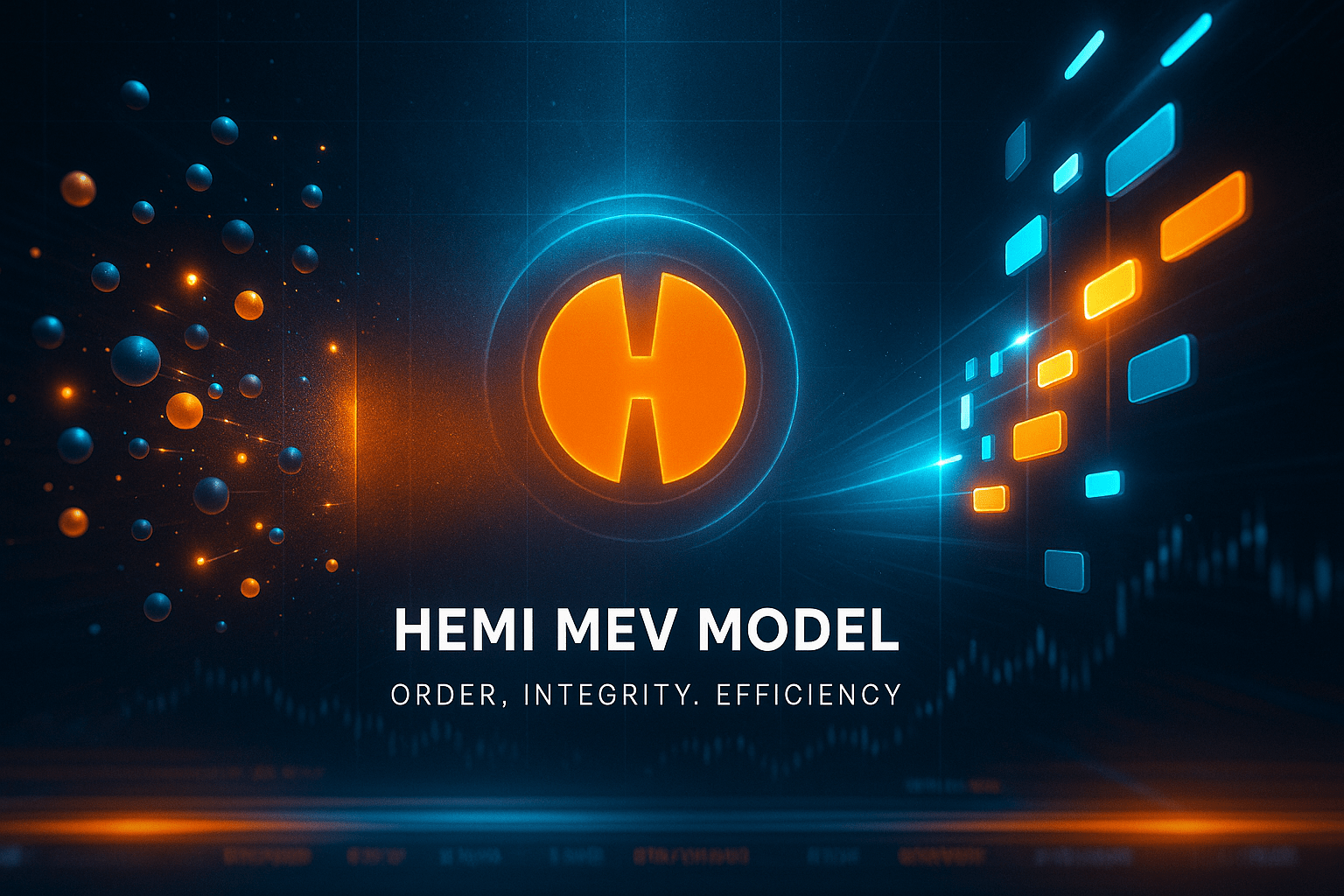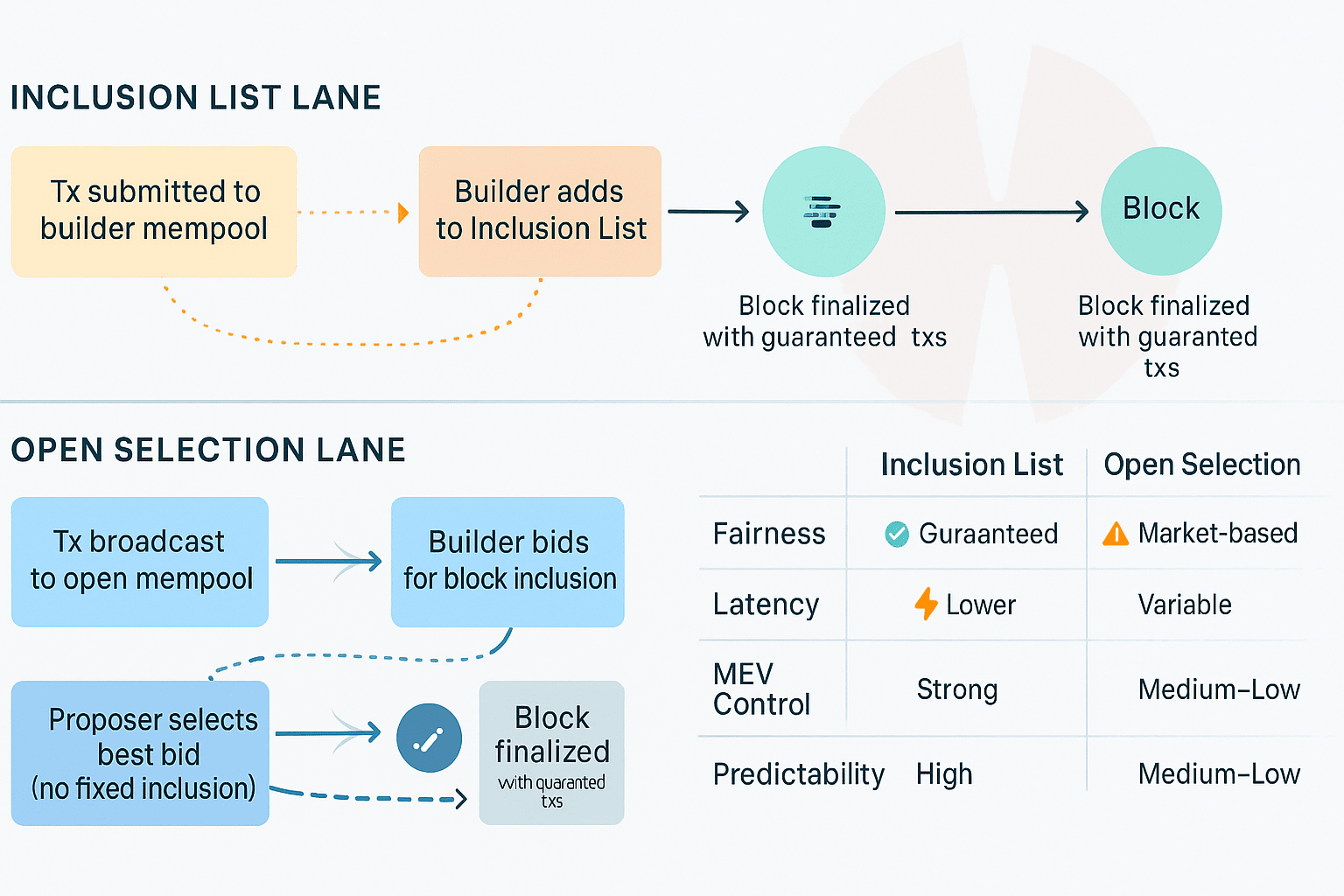01/11/2025 HEMI Article #29
Just as in a track race, each player runs in their designated lane and lane discipline ensures the integrity of the game, in the same way, the fairness of the transaction path in blockchain is very important. The question is whether each lane is truly fair, or has someone already reserved the path.
Value Proposition:
HEMI's goal is to reduce MEV risks and ensure a fair transaction environment. Inclusion lists and the PBS-Lite model play a crucial role in this direction. Just as you subscribe to a digital streaming platform and every user receives content of the same quality, HEMI aims to provide equal opportunities to every builder and proposer. This system keeps the market transparent and minimizes power imbalances.
@Hemi Its modular design and Bitcoin-Ethereum reference-based structure differentiate it from other networks. Its aim is to implement a balanced block-formation process, not limiting MEV gaming to just a few powerful entities.

Current Update / Announcement:
Recently $HEMI has provided an update on the direction of inclusion lists and PBS-Lite in its technical notes. This model illustrates a clear distinction between the roles of builders and proposers, which can reduce issues like front-running and transaction reordering. It signals that HEMI is not just making statements about fair block construction but is taking systematic action.
Why It Matters (Trader + Investor POV):
The threat of MEV can turn into real losses for traders. If an order is front-run or the transaction order in a block is altered, the outcome can be costly. Inclusion lists and the PBS-Lite model in HEMI aim to mitigate the risks of such scenarios.
This is an important signal for investors that token and network governance are becoming part of security enhancement, not just theory. If the MEV mitigation system succeeds, it could enhance both the credibility and long-term value of HEMI.
The risk is that if the guiding rules are not clear or the architecture is not effective in practice, old MEV patterns may resurface. Therefore, execution and continuous monitoring will be decisive here.

Technical Deep-Dive:
Two main pillars emerge in HEMI's modular structure:
Inclusion Lists: The network prepares an approved list including builders who follow transparent and rule-compliant activities. This limits the right to block inclusion to eligible participants.
PBS-Lite: In this, block construction and block selection are divided into two distinct roles. The builder only drafts the blocks while the proposer selects the appropriate blocks from those. This reduces conflicts of interest and keeps the transaction order more transparent.
Clear flowcharts and a builder-proposer swimlane model are available for developers, making the system's process visual and understandable.
Practical Tips for Builders & Developers:
Developers should study HEMI's MEV guidelines and inclusion list requirements. Keep transaction routing and qualified builder interactions clear in your dApp. It would be useful to indicate in the user interface that the application uses a fair lane model.
Future Outlook (Next 30 Days):
Potential next steps in HEMI may include community workshops on inclusion lists, the launch of an MEV mitigation testnet, and incentive programs to encourage builder-proposer participation. This period may mark a shift from proof of concept to proof of practice.
Closing:
HEMI has taken structured steps towards MEV control, and the objective is clear: a fair market and transparent block construction. Whether this model will prove practical and become a new standard in the industry will depend on the upcoming phases.
What do you think about this model? Could MEV control be the next decisive chapter in Web3?


#HEMINetwork #CryptoGovernance #MEVControl @Hemi $HEMI #Hemi